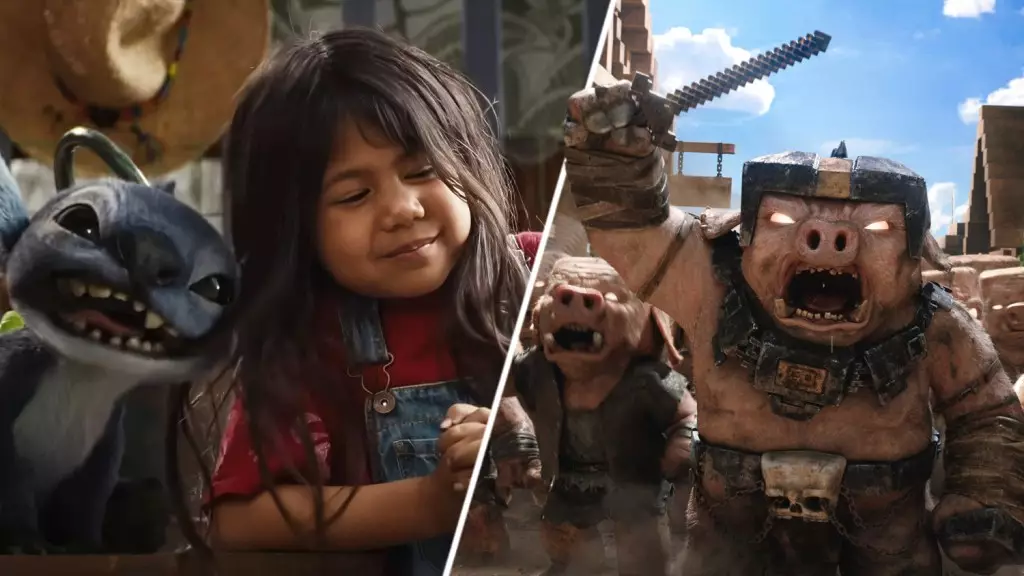In an era where blockbuster success constantly shifts toward franchise fatigue and oversaturation, Disney’s recent triumph with ‘Lilo & Stitch’ reveals a nuanced shift in audience preferences. What once was a modest animated entry from 2002 now stands as a testament to the enduring power of nostalgia, especially when wielded by a studio with a strategic grasp on market segmentation. Disney’s decision to revive and reanimate beloved properties is more than mere fan service; it’s a shrewd move that responds to evolving consumer demands for familiarity and emotional resonance amid a tumultuous post-pandemic box office landscape.
The film’s remarkable performance—currently in its sixth week and threatening to become this year’s highest-grossing Hollywood title—highlight the underestimated staying power of nostalgia-driven properties. Unlike the fleeting novelty of new franchises, these classics tap into emotional reservoirs, fostering a sense of trust and comfort in uncertain times. This is particularly evident in the overheated, often unpredictable international markets where ‘Lilo & Stitch’ dominates, effectively rewriting the narrative that nostalgia is primarily an American phenomenon. It’s a global phenomenon, with significant gross numbers in Mexico, France, Brazil, and beyond, cementing its status as an international blockbuster.
Market Trends Show Nostalgia’s Strategic Value for Studios
Disney’s strategic focus on beloved female-led franchises—such as ‘Moana 2’ and ‘How to Train Your Dragon’—is indicative of a broader industry trend: the rising importance of gender-diverse audiences. The demographic data showing high percentages of women engaging with these titles signifies a carefully calibrated market approach. Disney is leveraging these nostalgic properties not only for box-office returns but for cultivating long-term customer loyalty through merchandise, streaming, and retail sales.
The film’s performance also fuels confidence among industry insiders that the theatrical revival post-COVID is sustainable. Unlike the fleeting successes of recent years, which often relied heavily on international markets or franchise extensions, ‘Lilo & Stitch’ proves that authentic, emotionally resonant storytelling can drive sustained success. With domestic and international grosses already exceeding $957 million, Disney is demonstrating that the value of nostalgic films extends beyond initial release, transforming these titles into enduring revenue streams—both in theaters and on streaming platforms.
Economic and Cultural Implications of Nostalgia-Driven Blockbusters
What’s perhaps most revealing about this phenomenon is how it shifts Hollywood’s economic model. Studios are increasingly recognizing that investing in nostalgic franchises offers predictable, durable revenue streams. Merchandising sales for ‘Stitch’ alone have skyrocketed from a modest $200 million in 2019 to $2.6 billion in 2024, reflecting a keen awareness that audiences will continue to spend on characters they grew up with. This aligns with a broader business philosophy: securing loyalty through familiarity and durable branding.
Culturally, this movement underscores a desire for stability—a longing for simpler, more innocent narratives amidst the chaos of modern life. Disney’s ability to recast ‘Lilo & Stitch’ with modern touches while retaining its core appeal proves that nostalgia is not merely a copy-and-paste effort but a carefully curated strategy that respects its original essence. This approach invites a reassessment of what “success” in Hollywood means today. It’s no longer solely about massive initial box-office numbers but about creating franchises with longevity and multi-platform presence, an approach that benefits both consumers and investors alike.
In a world where unpredictability reigns and blockbuster fatigue looms, Disney’s ‘Lilo & Stitch’ sidelines the fleeting trends and doubles down on foundational storytelling rooted in nostalgia. It signals a sophisticated pivot that pairs emotional connection with strategic market positioning. As consumers seek authenticity and familiarity in turbulent times, Hollywood’s best response might simply be to revisit its roots—proving that sometimes, the most innovative move is to look backward with purpose and intent. The industry that recognizes and leverages this truth stands to redefine success in a landscape where emotional resonance, not just spectacle, becomes the most valuable currency.

